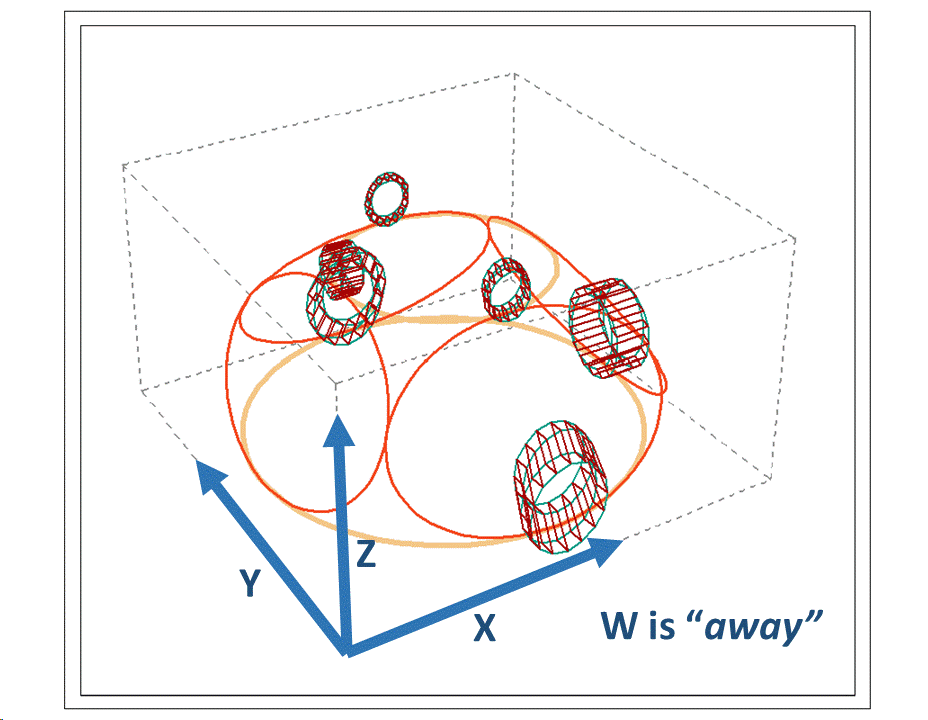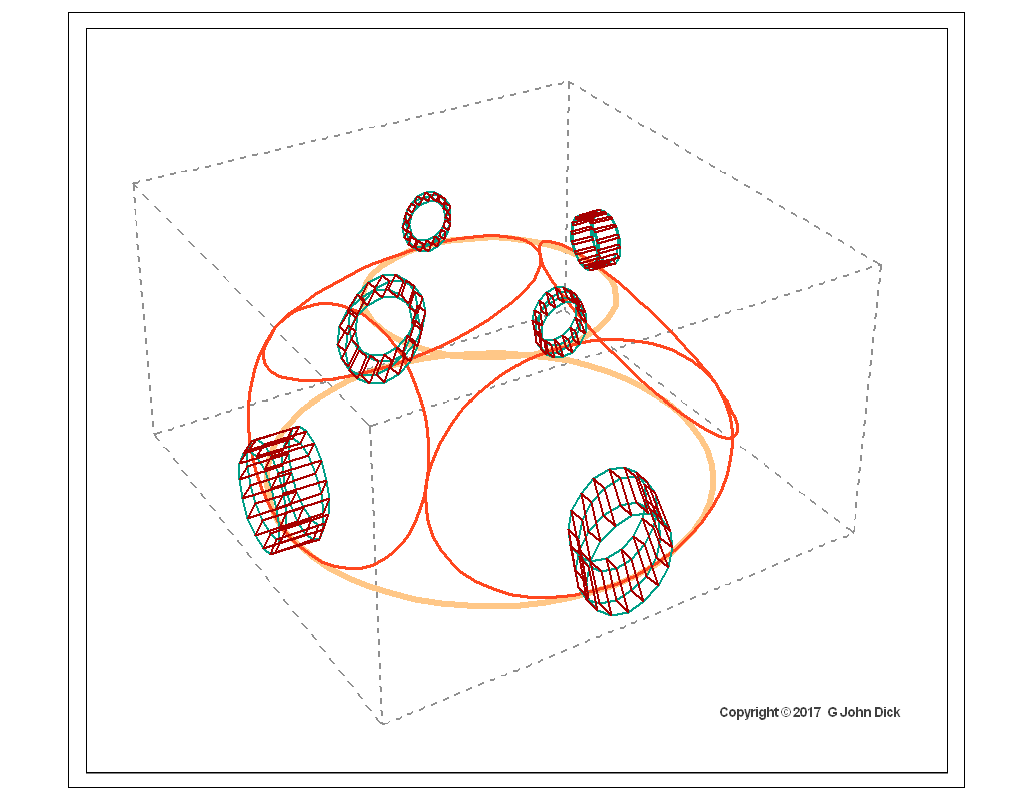Discussion--Is 4D Real?
While a 4D world may seem inconceivable to us, realizing such a world in a computer is not particularly more difficult than for a 3D environment.
Computer games already create rich 3D environments for us to explore. These environments do become real for us as we negotiate the tasks of the game.
With ever-increasing PC capability, an expansion to 4D is a very real option.
It would make possible a richer environment than anything possible in 3D due to greater possibilities for connectivity and shape.
A 4D environment also has "more" space than 3D does.
Hyperbolic 3D geometries (also with "more" space) have been getting some press recently for use in virtual reality (VR) environments.
What does it mean to have more space?
The VR users report that hyperbolic geometry presents a great many more "nearby" elements than is possible in ordinary 3D.
Again, this makes for a richer environment.
Worlds with many different dimensionalities are commonplace in science and are often graphically visualized, 2 or 3 dimensions at a time. The game-like environment shown here gives us a chance to see whether we can learn to make sense of worlds, real or created, 4 dimensions at a time.
Please continue reading the discussion on subsequent animation pages.
---------
|


